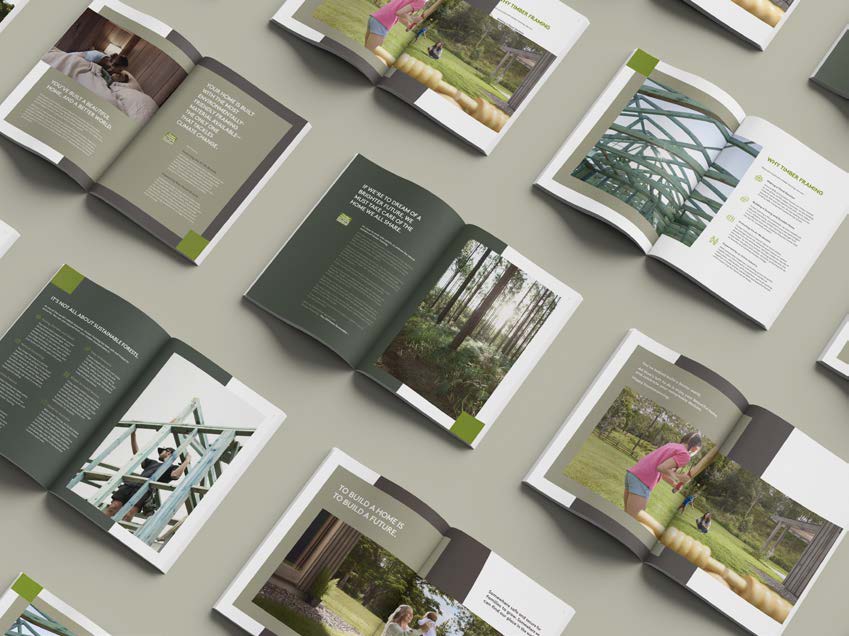Carbon Warrior
FTMA’s environmental arm
aiming to create a greener future
Together, building operations and construction account for nearly 40% of global energy-related CO2 emissions. And just 3 materials – concrete, steel and aluminium – are responsible for 23% of total global emissions.
In Australia, the built environment accounts of approximately 25% of the nation’s annual carbon emissions.
If we are to tackle climate change and limit temperature increases to 1.5°c, we must address and reduce the emissions related to the built environment.
The time to act is now and one of the easiest ways you can make a difference is through the choice of materials. Currently timber is the most prominent and versatile 100% renewable building material that provides an answer to the climate crisis.
In fact, according to the UNEP’s International Resources Panel, emissions from the material cycle of residential buildings in the G7 and China could be reduced by at least 80% in 2050 through a series of material efficiency strategies.
So be a Carbon Warrior, choose renewables and help create a greener future.
Partner Program
FTMA Members can be recognised
as Proud Carbon Warriors through
our partner program.
Benefits of Timber
There are many benefits of using responsibly sourced wood, a 100% renewable building material.
Resources
Access an entire suite of resources that share the environmental and practical benefits of Timber Framing.
Benefits of Timber
Whether you’re planning the build of your new home or a professional working in large-scale development, consider the significant environmental and health benefits of building with responsibly sourced wood as part of the solution to climate change. The reason wood can play a big part in helping tackle climate change is because timber is a natural and 100% renewable building material.
It is naturally grown and removes CO2 from the atmosphere. Wood products then store the carbon that the growing trees have removed from the air – about 50% of the dry weight of wood is carbon.
In fact, 1 cubic metre of wood contains roughly 0.9 tonnes of CO2! By using certified wood products, you can help store carbon for life and help tackle climate change.
- Carbon Storage
- Strong & Durable
- Fire Performance
- Natural Insulator
- Physiological & Psychological Benefits
Choosing timber in design and construction can help tackle climate change in several ways. One of the most important is that wood stores carbon.
Growing trees absorb carbon dioxide from the atmosphere, emit oxygen and store carbon. Carbon remains locked in the wood for the life of the piece of timber.
Be a Carbon Warrior and store carbon in your buildings with certified wood, a renewable building material.
Timber is one of the world’s top performing construction materials. Tried and tested over centuries, it’s inherent beauty, strength and durability has seen it remain one of the most popular building materials to this day.
Wood is very strong. A comparison with steel and concrete shows that structural timber has a strength to weight ratio 20 per cent higher than structural steel and four to five times higher than non-reinforced concrete in compression.
Timber is also a durable material for both homes and commercial buildings. When properly maintained it can last hundreds of years. Modern timber preservatives enhance natural durability.
Timber has been used for thousands of years and is resistant to heat, frost, corrosion and pollution.
To learn more about timber’s strength performing properties and engineered wood products visit WoodSolutions.
Yes, timber is a combustible material, but it burns in a slow, predictable and measurable way. These factors mean that timber actually performs strongly in fire events, when compared to other materials.
During the event of a fire, a charcoal layer will be formed on the surface of the timber and this layer will contribute to the fire resistance of the material. The charcoal layer insulates the inner core of the timber and it will slow down the heat penetration, keeping the temperate in the unburned material low and enabling the timber to carry its load much longer than steel. The protective charcoal layer created during a fire will also reduce the overall combustion rate of the timber.
This natural self-defence mechanism increases the possibility for a timber structure to survive a fire while maintaining its strength and stability.
Timber is a natural insulator due to the air pockets within its cellular structure. As an insulator, wood is 15 times better than masonry and concrete, 400 times better than steel, and 1,770 times better than aluminium. This helps to reduce the cost of heating and cooling a building.
In addition, lightweight timber framing methods allow easy installation of additional fibre or foil insulation.
As a result of this improved thermal performance, buildings produced using timber, particularly engineered timber such as Cross Laminated Timber (CLT), Glulam and Laminated Veneer Lumber (LVL) require less energy to heat and cool, resulting in reduced energy bills.
In addition, timber is hygroscopic and has the ability to exchange moisture with the surrounding air which provides a buffer against short-term changes in humidity and temperature.
Studies show that the use of wood in a building can have remarkably positive effects.
The positive effects are not only people’s wellbeing in a general sense, but more specifically on stress levels, blood pressure, communication, learning and healing.
Being a Carbon Warrior, isn’t just healthy for you, it’s healthy for the planet too!
Our Principal Partners








